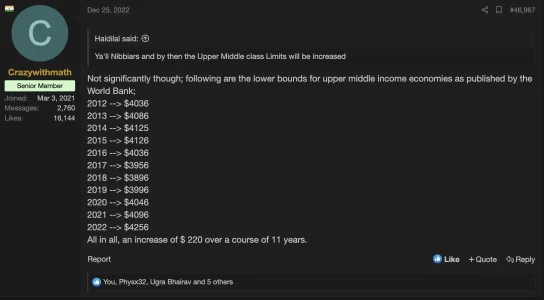- Joined
- Jun 27, 2024
- Messages
- 4,325
- Likes
- 25,287
1 .

 money.rediff.com
money.rediff.com
2 .

 www.thehindubusinessline.com
www.thehindubusinessline.com
3 .

4 .

 www.autocarpro.in
www.autocarpro.in
5 .

 health.economictimes.indiatimes.com
health.economictimes.indiatimes.com
6 .

 www.autocarpro.in
www.autocarpro.in
7 .

 m.economictimes.com
m.economictimes.com
8 .

9 .

 www.zeebiz.com
www.zeebiz.com
10 .
 www-forbesindia-com.cdn.ampproject.org
www-forbesindia-com.cdn.ampproject.org
11 .

 health-economictimes-indiatimes-com.cdn.ampproject.org
health-economictimes-indiatimes-com.cdn.ampproject.org
12 .

 m.economictimes.com
m.economictimes.com
CtrlS Datacenters Plans Rs 28,000 Crore Capex by 2029
CtrlS Datacenters, Asia's largest Rated-4 data centre company, plans to invest Rs 24,000-28,000 crore by 2029 to expand capacity by 600-700 MW of IT load across 15 data centres in eight cities, including Kolkata, Mumbai and Hyderabad.
2 .

Tata Motors to demerge passenger, CV businesses by 2025
Tata Motors to demerge passenger and commercial vehicle businesses, invest in advanced tech, aim for net debt-free JLR by 2025.
3 .

Maharashtra Looks To Expand Its Startup Portfolio To 50,000 Soon: Industries Minister
Maharashtra’s industries minister Uday Samant has said that the state is looking to expand its startups portfolio to 50,000 soon.
inc42.com
4 .

Cooper Corporation and Sinfonia Technology partner to introduce CPCB4+ certified LPG Gensets to India | Autocar Professional
Cooper Corporation and Sinfonia Technology partner to introduce CPCB4+ certified LPG Gensets to India
5 .

Genome sequencing lab with next-generation facilities inaugurated at AFMC-Pune - ET HealthWorld
Genome Sequencing Lab: "The NGS technology has extensive applications across various healthcare domains, including inherited diseases, oncology, transplant medicine, and reproductive medicine. This advanced technology significantly enhances the capabilities of the AFMS by enabling precise...
6 .

Mahindra Scorpio N turns two, brand Scorpio hits a million sales | Autocar Professional
Ramped-up production has seen 28,347 Scorpios roll out of Mahindra factories in April-May 2024, an increase of 63% YoY.
7 .

Mazagon Dock shares rally over 6% after bagging Navratna status
Mazagon Dock Shipbuilders, now a Navratna company, is set for exponential growth with significant investment opportunities and strategic partnerships in the defense sector. The stock continues to outperform, reflecting strong investor confidence in its future.
8 .

9 .

Bain Capital-backed Emcure Pharma to float Rs 1,952-crore IPO on July 3
Emcure Pharmaceuticals IPO: The initial share sale will be available for public subscription during July 3-5 and the bidding for anchor investors will open for a day on July 2, the company announced.
10 .
Yotta Becomes First Indian Data Centre Startup To Go Public On Nasdaq - Forbes India
11 .

Wockhardt aims to launch antibiotic with USD 25 bn mkt potential by early FY26 - ET HealthWorld | Pharma
Antibiotic: The company has invested over USD 500 million on its research efforts till now, which have yielded six successes, including Zaynich which are at different levels of development and marketing, said, founder chairman Habil Khorakiwala.
12 .

European jewellers using services of mega CFC for quality testing
The Mumbai-based mega common facility centre (CFC) in the special economic zone (SEZ) is now being used by European jewellers for quality testing. The facility, which was inaugurated by Prime Minister Narendra Modi in January, offers technical services like 3D printing, hallmarking, mass...
Last edited:





